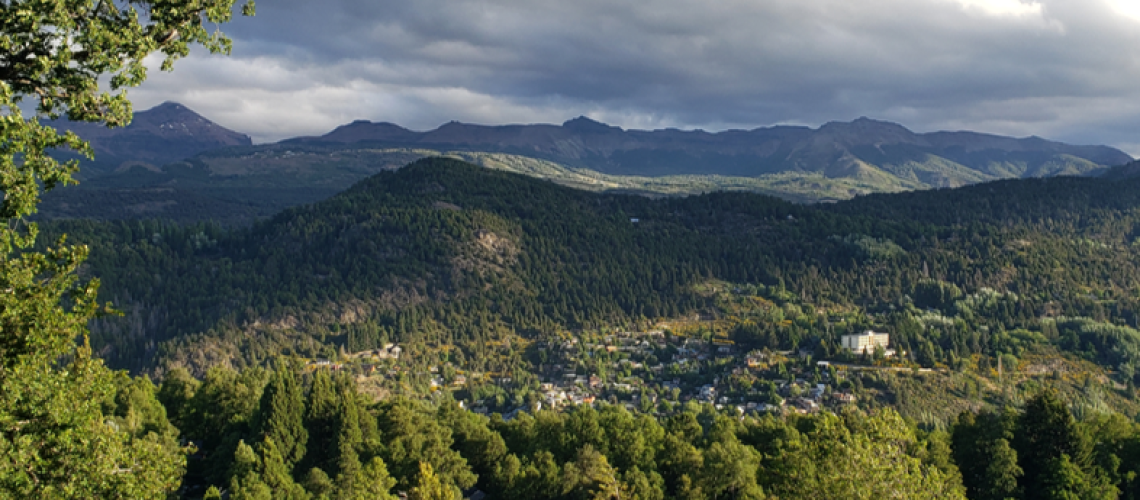Guest Post by Clara Mosso, 2022-2023 Sustainability Leadership Fellow, and Ph.D. Student in the Department of Ecosystem Science and Sustainability and Graduate Degree Program in Ecology at Colorado State University
Between a dream and a nightmare
Fresh air, open spaces, forests, mountains. Contact with nature, breath-taking scenery. A sense of freedom and belonging, privacy. All these and more are values associated to the areas in which residential land use mixes with wilderness. And we love these spaces! It is a dream for many, and a dream came true for increasingly more people around the world who decided they had enough of their crowded and stressful city lives and moved into these areas. Here, people can have the best of both worlds in the same space and time: the comfort of residential areas and the freedom of wilderness. Does this sound like a dream for you too? Whether you belong to the group that dreams about it or to the group that has already achieved this dream, let me ask you one question: How would you feel if we were at risk of losing these spaces?

Wildland-urban interface expansion: A wicked problem
The spaces in which residential uses intermix with wilderness are known as the wildland-urban interface (WUI). From a management perspective, these have been traditionally approached as fire-prone areas. With the increase of wildfire frequency and severity as a consequence of the interaction between climate change and residential expansion effects, these spaces got attention, and different management strategies have been put in place to address fuel mitigation in the WUI (Radeloff et al., 2018). As an example, in 2003 the US passed the Healthy Forest Restoration Act, which introduces Community Wildfire Protection Plans (CWPPs) as instruments for collaborative wildfire mitigation planning in WUI areas. Studies analyzing CWPPs across different states have found that these instruments usually focus almost exclusively on fuel mitigation (Abrams et al., 2016; Moritz et al., 2022). But it turns out that, besides being a fire-prone area, the WUI is also a social space; a space in which community members interact and make decisions about its use and the use of the resources it offers according to their values. Sometimes, there are contradictory values among members of the same WUI community, and these generate conflicts. Social and ecological components of the WUI add dynamicity and uncertainty to the different processes that occur in this space. Due to this, current management approaches are often insufficient to tackle the different dimensions of this issue. All these factors and their interactions make the expansion of the WUI fit the definition of a wicked problem: a complex issue without a clear solution (Hammer et al., 2009).

For complex problems, complex solutions: Transdisciplinarity.
So, if there is no clear solution to this complex problem, what should we do about it? Definitely not throw in the towel. The first step is embracing this complexity and its corresponding uncertainty and making peace with the fact that any approach to a solution in the case of a wicked problem will have trade-offs, advantages and disadvantages, and maybe “winners and losers” (Zscheischler & Rogga, 2015). The key here is working with the available resources instead of complaining about those that are not available. The second step is thinking outside the box. For this, collaboration among stakeholders is crucial: this is not an issue that could be tackled from a single discipline or stakeholder perspective. Multiple stakeholders and disciplines must be called to the table. This facilitates the integration of different sources and types of knowledge (academic and non-academic), overcoming discipline boundaries and the limitations of narrow approaches. These elements will then elicit a problem-focused and action-oriented approach. What I just described is what we know as a transdisciplinarity: a context-specific approach that embraces complexity and favors the convergence of multiple disciplines and the collaboration among different stakeholders and sectors, academic and non-academic. Transdisciplinarity transcends traditional disciplinary boundaries and favors knowledge transfer between fields (Rimondi & Veronese, 2018).

Barriers to transdisciplinarity in academia
Transdisciplinarity is easier said than done, however. The co-production of knowledge involved in transdisciplinary approaches requires a considerable investment of time and effort in designing and enabling strong forms of public participation. A similar situation occurs with the generation of partnerships among different institutions, which usually have different objectives and organizational cultures that need to be reconciled to elicit collaboration (Shuman et al., 2022). At the end of the day, the aim of transdisciplinary approaches is transforming society through collaboration and the creation of conditions that enable sustainability (Repp & Weith, 2015). The achievement of this goal involves iterative processes and usually goes beyond the possibilities of sustained scientific involvement. This limitation is related to the traditional structure of academic institutions and their evaluation and funding systems that do not recognize these efforts. The current academic system of rewards, manifested in the criteria that is used to evaluate, fund, and promote faculty members, focuses on excellence in specific disciplines and expects prolific publishing within these (Schmidt & Pröpper, 2017). Then, the involvement of scientists in the broader community and the co-production of knowledge through establishing partnerships with different non-academic groups is frequently not valued. This discourages early career scientists from getting involved in transdisciplinary approaches, since they are expected to produce frequent and highly cited publications, present at conferences, teach, and bring funding to academic institutions while enduring precarious labor conditions (Lerchster, 2016). The “extra time” for transdisciplinarity is just not available.
Opportunities to transdisciplinarity
Not everything is lost in Academialand, however. Some changes are occurring in the scientific community that is now willing to discuss (and sometimes challenge) the shortcomings of the aforementioned traditional academic structure and the way in which these hinder the development of transdisciplinary approaches. Recently, the National Science Foundation has recognized the transformative potential of discipline convergence through the implementation of funding programs for collaborative data science. Even when this approach to transdisciplinarity could be considered narrow, it is hopefully a first step to facilitate the transformation of the academic organizational structure.
Transformation is more advanced on the policy side of things, and this is related to the development of collaborative governance approaches that can contribute to enabling transdisciplinarity. Collaborative governance involves the engagement of the public in policy decision making and management, and the co-production of theoretical and practical knowledge through stakeholder collaboration (Darby, 2017; Emerson et al., 2012). An expression of collaborative governance is adaptive governance, which focuses on flexibility, learning from experience, and reflecting on the consequences of implemented actions (Berkes, 2017). Fortunately, policies related to WUI management in the US present some collaborative governance components that allow for reflexivity and adaptive governance. As I mentioned earlier, CWPPs should be developed following a collaborative governance approach, establishing agreements between different stakeholders: the State, local governments, and Federal management agencies, among others. In addition, the development of CWPPs should be based on minimum standards, which are defined and revised by the corresponding agency. The purpose of these minimum standards is allowing flexibility for adaptation to local contexts. These governance approaches are not perfect and discussing how collaborative they are in practice deserves an entire blog post. The main point here is that these flexible WUI policy aspects represent opportunities for collaboration and the co-production of knowledge between the academic sector and the broader community.
In need of a paradigm shift
The right path to a sustainable solution to WUI expansion is not defined. What is clear is that the key to transforming the way in which we approach this wicked problem (and others) is not within the academic or the policy spheres alone, but in the interaction with the broader society. If we want to develop efficient management approaches, scientists need to abandon their academic silos in the ivory tower and embrace not only complexity, but humility. Scientists: shut up and listen what the broader community has to say about this issue. What do they value? How do they want to live? What are their concerns? After all, science is service, and if we do not understand (or worst, if we underestimate) communities’ values and needs, effective service is not possible. No transformative research could be achieved from the ivory tower, without an understanding of how communities behave in their everyday context. At the same time, working and co-producing with communities is not possible for every scientist. And that is why collaboration among disciplines exists (and should be embraced)! Luckily, the concept of transdisciplinarity comes to the rescue and provides a framework to understand this complexity, collaborate, co-produce, and, in that way, approach a solution. A paradigm shift is needed to catalyze this transformation within social-ecological systems and start generating the much-needed synergy between different sectors that is required to approach sustainable solutions to wicked problems.
References
Abrams, J., Nielsen-Pincus, M., Paveglio, T., & Moseley, C. (2016). Community wildfire protection planning in the American West: Homogeneity within diversity? Journal of Environmental Planning and Management, 59(3), 557–572. https://doi.org/10.1080/09640568.2015.1030498
Berkes, F. (2017). Environmental Governance for the Anthropocene? Social-Ecological Systems, Resilience, and Collaborative Learning. Sustainability, 9(7), 1232. https://doi.org/10.3390/su9071232
Darby, S. (2017). Making space for co-produced research ‘impact’: Learning from a participatory action research case study. Area, 49(2), 230–237. https://doi.org/10.1111/area.12321
Emerson, K., Nabatchi, T., & Balogh, S. (2012). An Integrative Framework for Collaborative Governance. Journal of Public Administration Research and Theory, 22(1), 1–29. https://doi.org/10.1093/jopart/mur011
Hammer, R. B., Stewart, S. I., & Radeloff, V. C. (2009). Demographic Trends, the Wildland–Urban Interface, and Wildfire Management. Society & Natural Resources, 22(8), 777–782. https://doi.org/10.1080/08941920802714042
Lerchster, R. E. (2016). The Situation Is Tense! Inter- And Transdisciplinary Research Between Social Demands, University Logic And Multidimensional Competence Requirements. European Scientific Journal, ESJ, 12(10). https://doi.org/10.19044/esj.2016.v12n10p%p
Moritz, M. A., Hazard, R., Johnston, K., Mayes, M., Mowery, M., Oran, K., Parkinson, A.-M., Schmidt, D. A., & Wesolowski, G. (2022). Beyond a Focus on Fuel Reduction in the WUI: The Need for Regional Wildfire Mitigation to Address Multiple Risks. Frontiers in Forests and Global Change, 5, 848254. https://doi.org/10.3389/ffgc.2022.848254
Radeloff, V. C., Helmers, D. P., Kramer, H. A., Mockrin, M. H., Alexandre, P. M., Bar-Massada, A., Butsic, V., Hawbaker, T. J., Martinuzzi, S., Syphard, A. D., & Stewart, S. I. (2018). Rapid growth of the US wildland-urban interface raises wildfire risk. Proceedings of the National Academy of Sciences, 115(13), 3314–3319. https://doi.org/10.1073/pnas.1718850115
Repp, A., & Weith, T. (2015). Building Bridges across Sectors and Scales: Exploring Systemic Solutions towards A Sustainable Management of Land —Experiences from 4th Year Status Conference on Research for Sustainable Land Management. Land, 4(2), 325–336. https://doi.org/10.3390/land4020325
Rimondi, G., & Veronese, M. (2018). Defining the Dialogue Between Sciences: A View on Transdisciplinary Perspective in the Human Sciences. Informing Science, 21, 255–268. https://doi.org/10.28945/4115
Schmidt, L., & Pröpper, M. (2017). Transdisciplinarity as a real-world challenge: A case study on a North–South collaboration. Sustainability Science, 12(3), 365–379. https://doi.org/10.1007/s11625-017-0430-8
Shuman, J. K., Balch, J. K., Barnes, R. T., Higuera, P. E., Roos, C. I., Schwilk, D. W., Stavros, E. N., Banerjee, T., Bela, M. M., Bendix, J., Bertolino, S., Bililign, S., Bladon, K. D., Brando, P., Breidenthal, R. E., Buma, B., Calhoun, D., Carvalho, L. M. V., Cattau, M. E., … Zhang, X. (2022). Reimagine fire science for the anthropocene. PNAS Nexus, 1(3), pgac115. https://doi.org/10.1093/pnasnexus/pgac115
Zscheischler, J., & Rogga, S. (2015). Transdisciplinarity in land use science – A review of concepts, empirical findings and current practices. Futures, 65, 28–44. https://doi.org/10.1016/j.futures.2014.11.005






